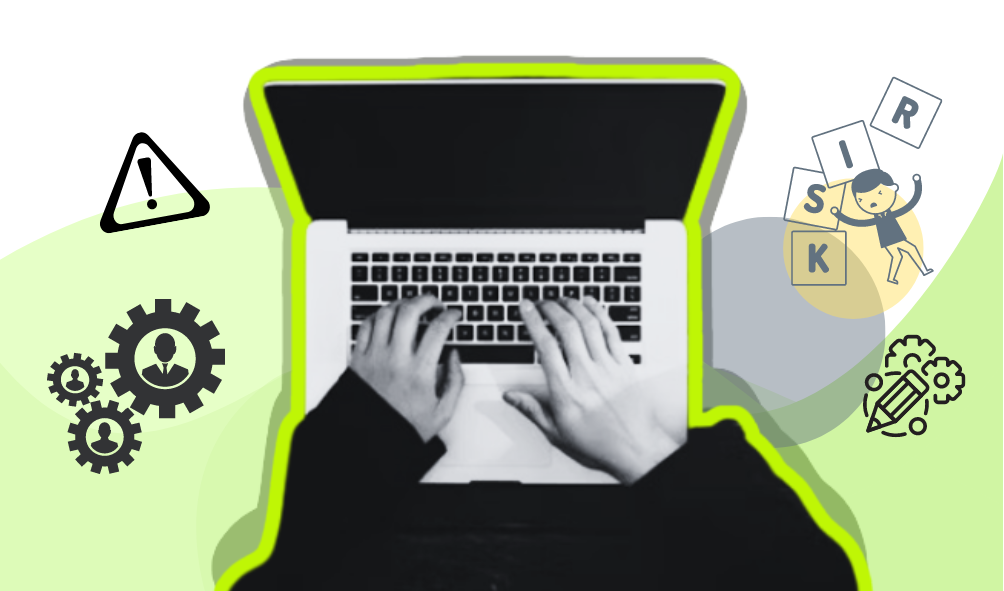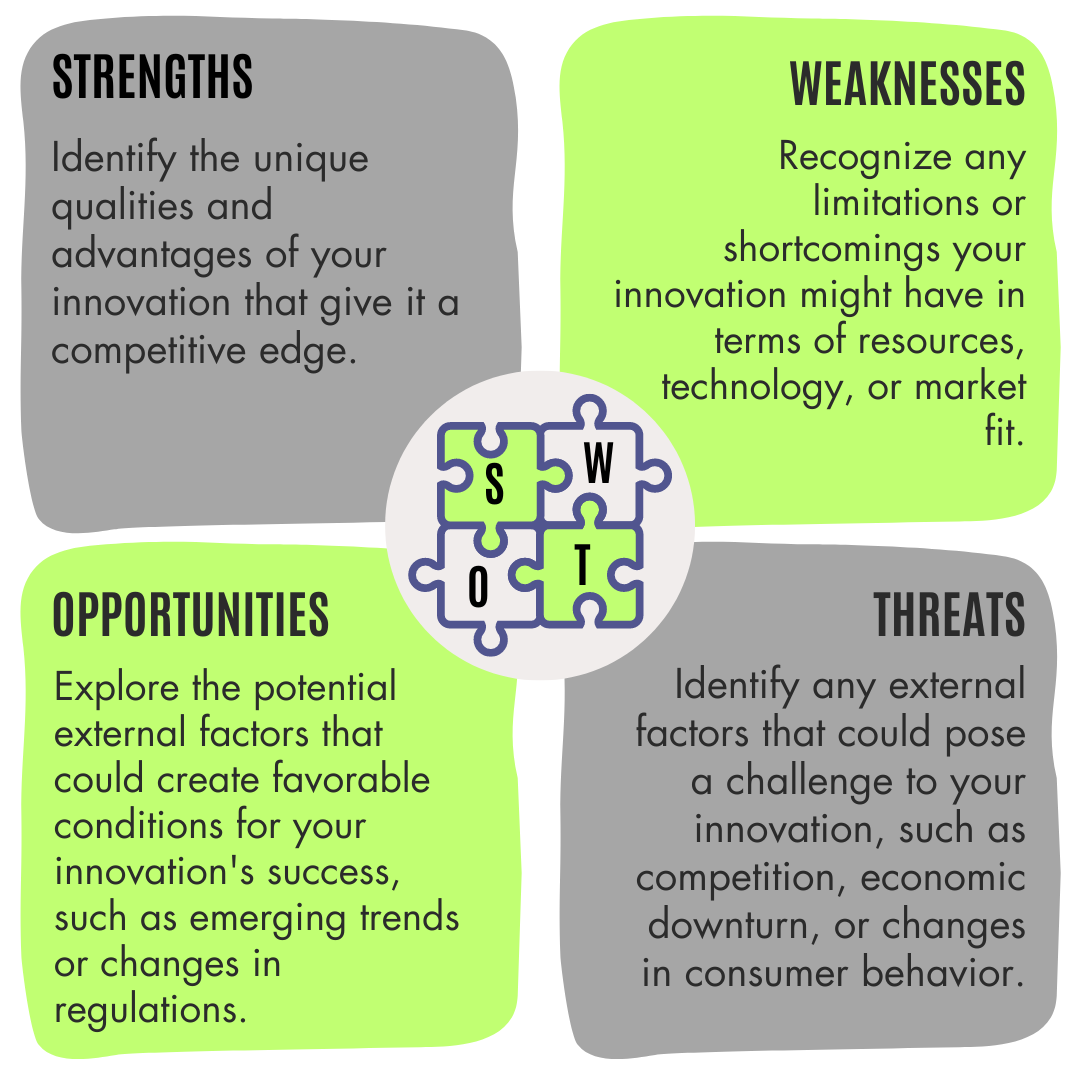
- Blog
How to identify and mitigate risks in innovation projects
By
HackLaunch
Imagine you’ve poured your heart and soul into an innovative project, a product, or a service poised to revolutionize the market. You can almost taste the victory, the feeling of leaving the competition in the dust. But then, reality hits – a critical flaw emerges, a risk gone unnoticed, and your dream innovation crumbles before your eyes.
Feeling the sting of failure? Unfortunately, you’re not alone. The road to innovation is rarely smooth, often riddled with unforeseen hurdles – market shifts, technological limitations, or even internal resource constraints. But before you throw in the towel, know this: these roadblocks aren’t insurmountable. By proactively identifying and mitigating risks, you can transform your innovation projects from fragile ventures to robust successes. In this blog post, we’ll equip you with the knowledge and strategies needed to navigate the path of innovation with confidence, ensuring your groundbreaking ideas reach their full potential. Let’s dive in and discover how to identify and mitigate risks in your innovation projects, turning fear of failure into fuel for success.
In the cutthroat world of business, innovation is the key to long-term success and sustainable growth. Staying ahead of the curve through emerging technologies, product development, and customer experience innovation will help you outperform competitors and dominate the market. Yet, it’s important to remember that innovation doesn’t always sail smoothly. It’s vital to identify and mitigate the potential risks involved. Let’s explore strategies to do exactly that!

Understanding Risks: Assessment
Before we dive into solutions, let’s understand the various risks commonly faced in innovation projects:

- Market Risk: The risk that your innovation might fail to find a receptive market. You may have misunderstood customer needs or overestimated market size.
Imagine pouring your heart and soul into developing a revolutionary product, only to discover later that there’s simply no market for it. This scenario embodies market risk. It arises from a misunderstanding of customer needs or an overestimation of the market size. To mitigate this risk, deep customer understanding is key. Employ design thinking methodologies to delve into the lives of your target audience, empathize with their pain points, and ensure your innovation truly addresses their needs. Additionally, conduct thorough market research to accurately gauge the potential size and receptiveness of the market for your offering. - Technical Risk: The risk that your technology or product might not function as planned or be too complex to develop successfully under your constraints.
Innovation often ventures into the realm of cutting-edge technology. But what if the technology you rely on proves unreliable, exceeding your development capabilities or simply not functioning as intended? This is technical risk. To avoid this pitfall, conduct a thorough feasibility study to assess the technical viability of your innovation. This might involve consulting with experts in the relevant field, prototyping your idea to test its technical feasibility, and exploring alternative technologies that could serve as a solid foundation for your innovation. - Financial Risk: The risk that your innovation project might exceed its budget or that there is insufficient funding for full development and launch.
Innovation projects often require significant investments in research, development, and launch. However, unforeseen circumstances can lead to budget overruns, leaving your project financially stranded. This is financial risk. To manage this risk, develop a comprehensive budget that factors in potential contingencies. Additionally, explore alternative funding sources such as venture capital, angel investors, or crowdfunding to mitigate the financial burden and spread the risk.
- Operational Risk: The risk that you lack the resources (people, skills, expertise, infrastructure) to execute the project successfully.
Even the most brilliant ideas can falter if you lack the resources to execute them effectively. This is operational risk. It stems from a lack of necessary personnel, skills, expertise, or infrastructure. To address this risk, conduct a thorough resource assessment to identify any gaps and develop a plan to address them. This might involve hiring skilled personnel, outsourcing specific tasks, or acquiring the necessary infrastructure to ensure the smooth execution of your project. - Competition Risk: The risk that a competitor might release a similar or better product to the market or your innovation can be easily replicated.
The innovation landscape is rarely a solitary journey. You’ll likely face competition from established players or even startups vying for the same market share. This is competition risk. To counter this risk, conduct a comprehensive competitive analysis. Identify your competitors’ strengths and weaknesses, and anticipate their potential responses to your innovation. By understanding the competitive landscape, you can position your innovation strategically and differentiate yourself from the pack. - External Risk: The risk of unforeseen external factors such as changes to regulations, shifting market preferences, or economic downturns that negatively impact your project. The world of innovation doesn’t exist in a vacuum. Unforeseen external factors such as shifting regulations, economic downturns, or even changes in social trends can significantly impact your project. This is external risk. While it’s impossible to completely eliminate external risks, you can proactively manage them by staying informed about current events and industry trends, developing contingency plans to address potential disruptions, and building resilience into your innovation project to adapt to changing circumstances.
By understanding these diverse risks and implementing effective mitigation strategies, you can equip yourself to navigate the challenges of innovation and pave the way for the successful completion of your groundbreaking projects. Remember, knowledge is power, and when it comes to the world of innovation, being prepared is half the battle.
Strategies to Identify Risks in Innovation
Identifying risks effectively puts you in a strong position to manage them. Here are crucial strategies to adopt:
- Resource Allocation: Identify project requirements. Clearly define the needs of your innovation project to determine the necessary resources (personnel, equipment, software, etc.). Evaluate internal resources. Assess the skills and expertise available within your organization and identify any gaps. Develop a resourcing plan. Based on the identified gaps, allocate resources effectively. This might involve hiring new personnel, outsourcing tasks, or acquiring necessary equipment.
- Define Clear Objectives: Clearly define what you want to achieve with your innovation project. Establish metrics to track your progress and measure the success of your project. Set realistic goals that are achievable within your constraints. Ensure your objectives align with your overall business strategy. Set specific deadlines for achieving your objectives.
- Conduct Thorough Market Research: Conduct surveys, interviews, and focus groups to gather direct feedback from your target audience. Secondary research: Analyze industry reports, market trends, and competitor data to gain insights into the broader market landscape.
- Data-Driven Decision Making: Gather data from various sources such as market research, customer feedback, project performance metrics, and competitor analysis. Analyze the data. Identify trends, patterns, and insights that can inform your decision-making process. Use data to support your decisions. Base your choices on concrete evidence rather than intuition or guesswork.
- Scenario Planning: Brainstorm potential future scenarios to assess the impact of internal and external risks on your innovation project.
While predicting the future is impossible, scenario planning allows you to explore a range of potential circumstances your innovation project might encounter. This proactive approach involves brainstorming different future scenarios, both positive and negative, and assessing the impact of internal and external risks on your project within those scenarios.
For instance, you might consider scenarios involving rapid technological advancements, unexpected changes in regulations, or economic downturns. By analyzing how your project would fare in these scenarios, you can identify potential external risks you might not have otherwise considered.
Scenario planning is not about predicting the exact future but rather about preparing for possibilities. By considering various scenarios and their potential implications, you can develop contingency plans and build flexibility into your innovation project, allowing you to adapt to unforeseen circumstances and mitigate potential risks more effectively. - SWOT Analysis: Use this classic framework to pinpoint your project’s Strengths, Weaknesses, Opportunities, and Threats. It’s a great way to uncover risks.
The SWOT analysis is a classic framework that can be incredibly effective in uncovering risks associated with your innovation project. This framework involves analyzing your project’s:

By systematically analyzing these four elements, you can gain valuable insights into potential risks associated with your project. For instance, during a SWOT analysis, you might identify a lack of in-house expertise (weakness) as a threat to the successful development of your innovation (threat). Recognizing this risk early on allows you to develop strategies to address it, such as partnering with external experts or acquiring the necessary expertise through training.
Mitigating the Risks of Innovation
Proactive identification is half the battle; now it’s time to minimize those risks! Consider these strategies:
- Agile Development: Break down your project into smaller iterations and obtain regular feedback using methodologies like Agile Development and the Lean Startup approach. This increases your flexibility and limits the impact of issues that arise.
- Prototyping: Create early prototypes to test your idea’s functionality and get market feedback. This helps prevent investing in a solution that may not be viable.
- Diversification: Spread your risk across multiple innovation projects that may have varying degrees of risk.
- Foster Team Collaboration: Partner with expert innovation consulting firms, participate in hackathons, and explore open innovation models to mitigate risks. A cohesive team is your best defense againstinnovation risks. Encourage collaboration, innovation risks, diverse perspectives, and open communication channels to create a robust communication channels to create a support system. A united team is more adept at identifying and handling risks. Shared insights and experiences enhance problem-solving capabilities.
- Develop a Contingency Plan: No innovation journey is without its unexpected twists. Develop a well-thought-out unexpected twists. Develop a well-thought-out contingency plan that outlines the steps to take contingency plan that outlines the steps to take when faced with unforeseen challenges. Having a contingency plan in place provides a roadmap for navigating unexpected obstacles, minimizing downtime and keeping your project on track. Develop a clear risk mitigation strategy. Assign responsibilities for risk management and establish protocols for handling identified risks.
Embedding Innovation Culture for Long-term Success
Creating processes to consistently identify and mitigate risks across the entire organization is key for long-term success. Here’s how:
- Dedicated Innovation Team: Form a dedicated team focused on innovation to streamline processes, monitor risk, and ensure the implementation of mitigation strategies.
- Continuous Open Communication: Encourage open discussion of risks across teams to promote early identification and proactive problem-solving. Regularly gather feedback from stakeholders and users. This real-time input can help intweaking the project to align with market needs and reduce risks. Innovation is an ever-evolving process. Foster a culture of continuous learning anda culture of continuous learning andadaptation within your team. Stay nimble and adaptation within your team. Stay nimble andbe ready to pivot when necessary. Be ready to pivot when necessary. Encourage regular reviews and learning sessions. The ability to adapt ensures yoursessions. The ability to adapt ensures yourteam can respond swiftly to emerging risksteam can respond swiftly to emerging risks and market dynamics.
- Learn from Failures: Treat failures not just as setbacks but as opportunities. Analyze failures to extract lessons for future projects. Innovation often involves taking risks, andfailures are a part of the process. Embrace failures are a part of the process. Embrace failure as an opportunity to learn, adapt, and improve. Encourage a culture where failures are viewed as stepping stones to success. Extract valuable lessons from setbacks and apply them to enhance future projects.
- Regular Project Audits: Establish a schedule. Conduct project audits at regular intervals throughout the innovation process. Evaluate project performance. Assess your progress against your defined objectives and identify any deviations. Identify and address risks. Regular audits help you proactively identify potential risks and take necessary mitigation measures.
Conclusion
Remember, innovation thrives in a prepared environment. By embracing the strategies outlined in this post – from design thinking for identifying risks to agile development for mitigating them – you can transform your innovation projects into powerful engines for growth. Don’t let fear of the unknown hold you back. Equip yourself with the knowledge to navigate the challenges, build a culture of innovation, and watch your groundbreaking ideas blossom into reality. After all, in the ever-evolving world of business, the biggest risk lies in not taking any risks at all. So, go forth, innovate boldly, and conquer the path to success!
HackLaunch is a global collective team of entrepreneurs, startup founders and industry leaders that traverse strategy, marketing, tech, product and design to help businesses thrive and grow.
Share this post:
Table of Contents
INSIGHTS


